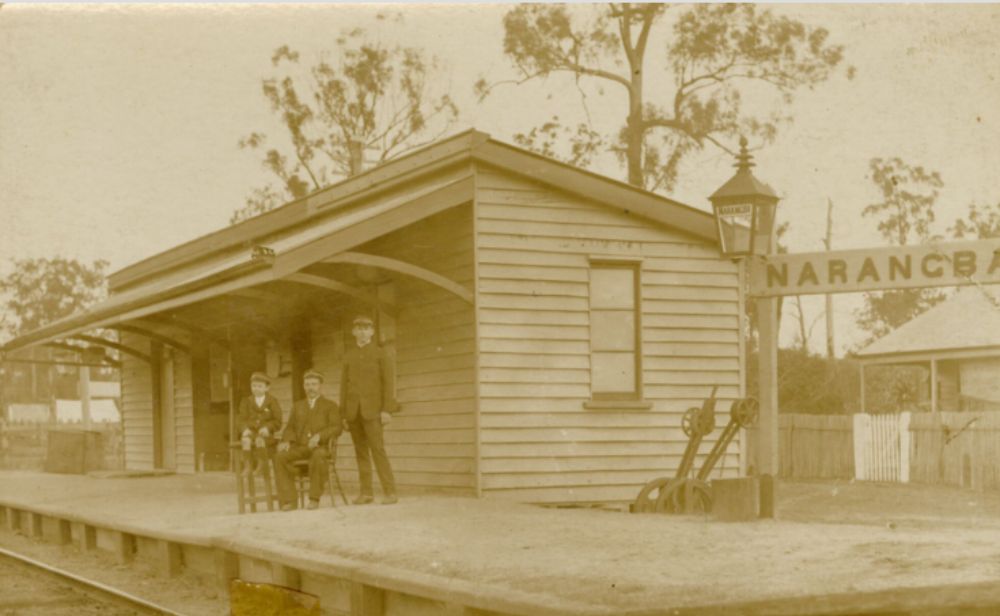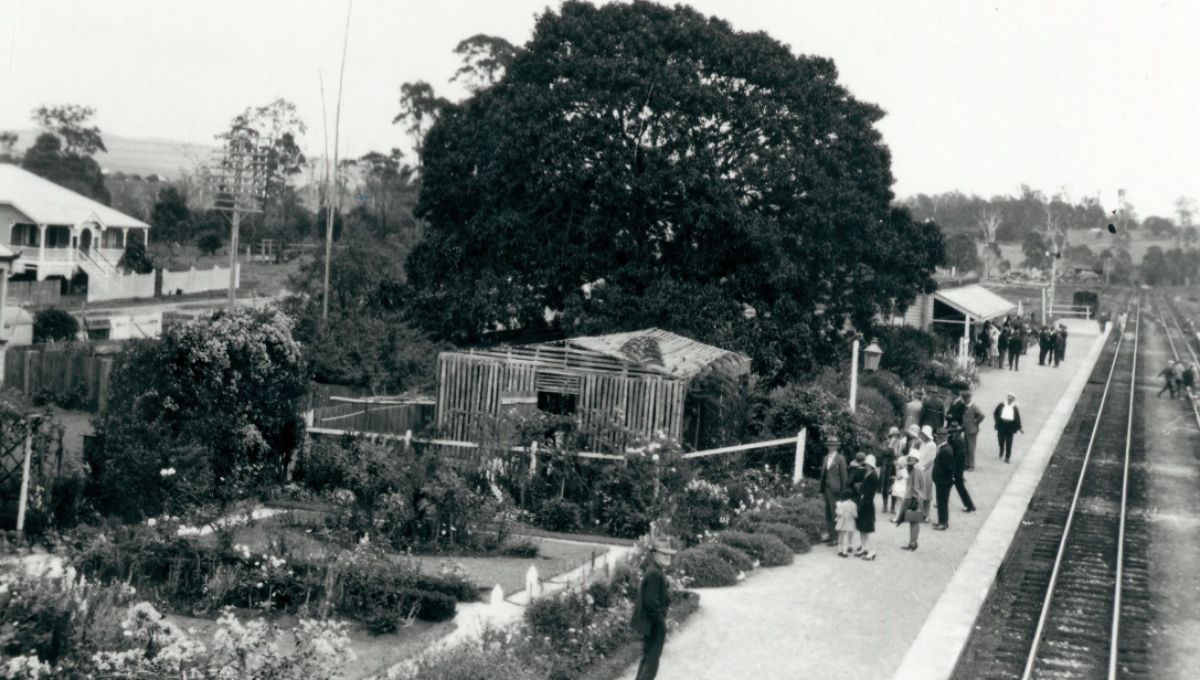Narangba Train Station is more than just a railway stop. It’s a symbol of the area’s rich history and transformation. Originally part of the Stoney Creek area, the station first opened its doors in 1888 under the name Sideling Creek Station. Its name was later changed to Narangba, derived from the Aboriginal word for “small ridge”, which fittingly describes the terrain where the station and its surrounding township are located.
In the early 20th century, railway stations were not just transit points but also hubs of local pride, often adorned with meticulously kept gardens. Narangba Station was no exception and quickly became a standout example of this tradition. The station’s garden became the pride of the community, earning numerous awards for its beauty and creative design. The word “Narangba” was boldly spelt out using vibrant, colourful irises, each letter framed by an old motor tyre painted green, giving the station a distinctive and artistic touch that set it apart from others.
A Legacy of Beauty and Tragedy

But the garden’s charm didn’t stop at its unique lettering. The station also featured a bush house – a small structure brimming with a diverse array of plants, including ferns, staghorns and a vibrant assortment of flowers, creepers and orchids. This green oasis transformed the platform into a living gallery of local flora, making Narangba Station a botanical treasure in its own right. The garden’s enchanting display not only delighted commuters but also served as a point of pride for the station staff, especially under the care of station master Norman Rose, who helped the station win garden competitions year after year during his tenure from 1922 to 1944. The lush greenery and carefully curated plants created an inviting and picturesque environment, turning the station into more than a transportation hub – it became a landmark of beauty and a celebrated community achievement.
Despite its peaceful appearance, Narangba Station has witnessed tragedy. In a devastating accident, two passengers lost their lives when one train collided with the rear of a stationary suburban train. This incident underscored safety concerns around Queensland’s wooden-bodied rolling stock, which remained in use until 1986.
Today, Narangba has evolved dramatically, growing from a population of just 58 people in 1911 to over 18,000 in 2020. Its railway station remains a crucial part of the town’s infrastructure, symbolising both its historical roots and its ongoing development into a bustling community.
Read more stories from The Caboolture Guide print magazine here:
- Caboolture Connect: Updates from the Community
- What’s Hot Around Town
- Swing Into A Rockabilly Wonderland
- New Women’s Health Hub Opening in Caboolture
- A Carnival of Fun for All Ages
- Expansion Time for Caboolture Neighbourhood Centre
- Tis the season to be jolly!
- Honouring Local Heroes at Combined Services Awards
- A Spiral Away From the Top
- Carrot, Zucchini and Date Muffins (a Weight Watchers recipe)
- Buckle Up for Bulls, Broncs and Bands at Triple B Rodeo
- Find Help for Life’s Problems at Zonta Wellbeing Expo for Women and Girls
- Shimmy and Sparkle at Rhythms of Mayyada
- See the difference, be the difference
